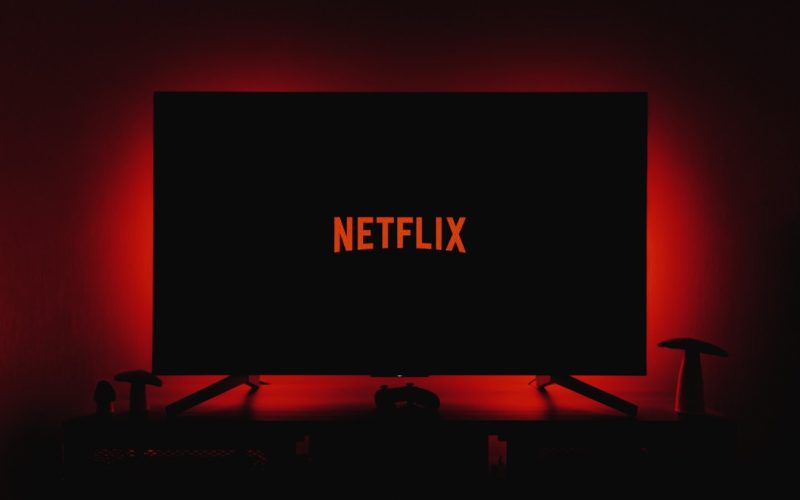Table of Contents Show
I. The Dawn of the Streaming Era: A Cultural Shift
The way we consume media has undergone a seismic transformation over the past two decades, thanks in large part to the rise of streaming services. Gone are the days when families gathered around a television set at a designated hour to watch their favorite shows, constrained by rigid programming schedules and the tyranny of commercial breaks. The dawn of the streaming era has ushered in a new world of on-demand entertainment, where content is available at our fingertips, ready to be consumed anytime, anywhere.
This cultural shift began in earnest with the launch of Netflix’s streaming service in 2007. Originally a DVD rental company, Netflix’s pivot to streaming marked the beginning of a new chapter in media consumption. With the ability to stream movies and television shows over the internet, viewers were no longer tethered to the constraints of traditional broadcast television. The success of Netflix was swift and undeniable, setting the stage for a proliferation of streaming services that would soon follow.
The appeal of streaming services lies in their convenience and control. Unlike traditional TV, where viewers had to adhere to a network’s schedule, streaming allows users to watch what they want, when they want. Binge-watching entire seasons of a show became a cultural phenomenon, as streaming platforms released entire series at once, catering to our insatiable appetite for content. The convenience of streaming extended beyond television shows and movies; it also revolutionized how we listen to music, with platforms like Spotify and Apple Music giving us access to millions of songs on demand.
The rise of streaming has also democratized content creation. Platforms like YouTube, which began as a space for amateur videos, have evolved into a massive ecosystem where independent creators can reach global audiences. This shift has challenged the traditional gatekeepers of media, allowing new voices and diverse perspectives to flourish. The explosion of content, from independent films to niche podcasts, has expanded the boundaries of what media can be, catering to an increasingly fragmented audience with diverse tastes and interests.
But with this explosion of content comes new challenges. The sheer volume of available media can be overwhelming, and the competition for our attention is fierce. As streaming services proliferate, consumers are faced with a paradox of choice, navigating an ever-growing sea of options to find content that resonates with them. The streaming revolution has given us unparalleled access to media, but it has also transformed the way we engage with it, raising important questions about the future of entertainment.
II. The Major Players: Navigating the Streaming Landscape
The streaming landscape is vast and varied, with a multitude of platforms vying for our attention and subscription dollars. While Netflix was the pioneer, the market has since become crowded with competitors, each offering its own unique blend of content and features. Understanding the major players in the streaming industry is essential for navigating this complex and ever-evolving landscape.
Netflix remains the undisputed leader in the streaming world, with over 200 million subscribers worldwide. Its success is built on a foundation of original content, with critically acclaimed series like Stranger Things, The Crown, and The Witcher drawing in viewers. Netflix’s strategy of investing heavily in original programming has paid off, allowing it to maintain its dominance in the market despite increasing competition.
Amazon Prime Video is another major player, offering a vast library of movies, TV shows, and original content as part of the broader Amazon Prime membership. With hits like The Marvelous Mrs. Maisel and The Boys, Amazon has positioned itself as a formidable competitor in the streaming space. The integration of Prime Video with Amazon’s broader ecosystem, including free shipping and exclusive deals, adds significant value for subscribers, making it an attractive option for consumers.
Disney+ burst onto the scene in 2019, quickly amassing millions of subscribers with its treasure trove of content from Disney, Pixar, Marvel, Star Wars, and National Geographic. The appeal of Disney+ lies in its family-friendly programming and nostalgia factor, offering viewers access to beloved classics alongside new originals like The Mandalorian. The platform’s aggressive expansion into international markets has further solidified its position as a major contender in the streaming wars.
HBO Max, launched in 2020, brings together content from HBO, Warner Bros., DC, and more, offering a diverse range of programming that includes everything from blockbuster movies to critically acclaimed dramas. HBO’s reputation for high-quality content has made HBO Max a compelling choice for viewers seeking premium entertainment. The platform’s decision to release new Warner Bros. films simultaneously in theaters and on streaming during the COVID-19 pandemic marked a significant shift in the industry, highlighting the growing power of streaming services.
In addition to these major players, there are numerous other streaming platforms, each with its own niche and audience. Hulu, known for its strong lineup of current TV shows and original programming, appeals to viewers who want to stay up to date with the latest series. Apple TV+, though newer to the scene, has made a splash with original content like Ted Lasso and The Morning Show. Then there are the more specialized platforms like Peacock, Paramount+, and Discovery+, which cater to specific tastes and interests.
Navigating the streaming landscape requires a careful consideration of your viewing habits, content preferences, and budget. With so many options available, the key is finding the right mix of services that offer the content you love without overwhelming you with choices.
III. The Economics of Streaming: A New Business Model
The rise of streaming services has not only transformed how we consume media but also upended the traditional business models of the entertainment industry. The economics of streaming is a complex and rapidly evolving landscape, with platforms experimenting with different strategies to attract subscribers, generate revenue, and sustain their operations.
One of the most significant shifts brought about by streaming is the transition from a pay-per-view model to a subscription-based model. Instead of paying for individual movies or TV shows, consumers now pay a monthly or annual fee for access to a platform’s entire library of content. This model has proven to be highly lucrative for streaming services, providing a steady stream of revenue and encouraging user engagement through binge-watching.
However, the subscription model also presents challenges. With so many streaming services competing for subscribers, the cost of maintaining multiple subscriptions can quickly add up. This has led to the phenomenon of “subscription fatigue,” where consumers become overwhelmed by the number of services they need to pay for to access all the content they want. In response, some platforms have introduced ad-supported tiers or bundled their services with other offerings to provide more value to subscribers.
Original content has become a critical component of the streaming business model. Platforms like Netflix and Amazon Prime Video have invested billions of dollars in producing original programming, recognizing that exclusive content is key to attracting and retaining subscribers. This has led to a golden age of television, with streaming services producing high-quality, diverse, and innovative shows that often rival or surpass traditional network programming. The success of these originals has also prompted traditional studios and networks to launch their own streaming platforms, further intensifying the competition.
The economics of streaming extends beyond just subscription revenue. Data is a valuable asset for streaming services, providing insights into viewer behavior, preferences, and trends. By analyzing this data, platforms can optimize their content offerings, recommend personalized content, and even predict what types of shows or movies will be successful. This data-driven approach has transformed content creation and marketing, allowing streaming services to cater to individual tastes in ways that traditional media could never achieve.
Despite the success of the streaming model, it is not without its challenges. The cost of producing high-quality original content is substantial, and the competition for talent, intellectual property, and audience attention is fierce. As streaming services continue to evolve, they will need to find new ways to differentiate themselves, manage costs, and adapt to changing consumer preferences in an increasingly crowded market.
IV. The Future of Streaming: Opportunities and Challenges
As we look to the future, it is clear that streaming services will continue to play a central role in how we consume media. However, the landscape is far from settled, and the next decade is likely to bring new opportunities and challenges for both consumers and content creators.
One of the most significant trends shaping the future of streaming is the continued fragmentation of the market. As more studios and networks launch their own streaming platforms, the competition for subscribers will intensify, leading to further fragmentation of content. Consumers may find themselves subscribing to multiple services to access all the content they want, or they may be forced to make difficult choices about which platforms to prioritize. This could lead to a resurgence of bundling, where platforms offer packages that combine multiple services at a discounted rate.
Another key trend is the increasing importance of international markets. While the U.S. remains the largest market for streaming services, the growth potential in regions like Asia, Europe, and Latin America is enormous. To succeed in these markets, platforms will need to invest in localized content, adapt their pricing strategies, and navigate complex regulatory environments. The global expansion of streaming services will also drive further innovation in content, as platforms seek to appeal to diverse audiences with different cultural tastes and preferences.
The rise of new technologies will also shape the future of streaming. Advances in artificial intelligence and machine learning will enable even more personalized content recommendations, improving the user experience and driving engagement. Virtual reality (VR) and augmented reality (AR) offer the potential to create immersive, interactive experiences that go beyond traditional media. These technologies could redefine what it means to “watch” a show or movie, creating new opportunities for storytelling and audience engagement.
However, the future of streaming is not without its challenges. The issue of content piracy remains a significant concern, with illegal streaming sites continuing to undermine legitimate platforms. Streaming services will need to invest in robust security measures and work with governments and industry partners to combat piracy effectively.
Moreover, the impact of streaming on the creative industries is a topic of ongoing debate. While streaming has provided new opportunities for content creators, it has also disrupted traditional revenue models, particularly in the music industry. The shift towards streaming has led to concerns about fair compensation for artists and the sustainability of creative careers in an environment where content is increasingly commoditized.
In conclusion, the rise of streaming services has transformed the media landscape in profound ways, offering unprecedented access to content and reshaping how we engage with entertainment. As we navigate the future of streaming, it is essential to balance the opportunities with the challenges, ensuring that the industry continues to evolve in ways that benefit both creators and consumers. The future of streaming is bright, but it will require innovation, collaboration, and a commitment to addressing the complex issues that lie ahead.









